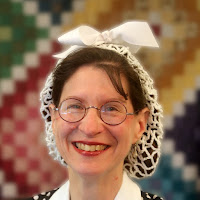 |
| Library of Congress. |
Born October 2, 1905, into the prestigious Kentucky Breckinridge family (her great-grandfather was Vice President of the United States under James Buchanan). No slouch herself, Marvin’s mother was the daughter of industrialist B.F. Goodrich (yes, the tire people). Another cousin would go on to become Arizona’s first congresswoman.
Marvin moved so often as a child, that she attended twelve schools before graduating from Milton Academy in Massachusetts. She enrolled at Vassar College where she majored in French and minored in history. She also made a significant impression on one Edward R. Murrow when she founded the National Student Federation of America. After Vassar, she combined her love of travel with the desire to explore photography and cinematography as a career by being a postgraduate student at the Clarence White School of Photography, University of Berlin, the Catholic University of Lima, and the American University of Cairo. She also found time to become a licensed pilot during this time.
Anxious to use her cinematography skills for the greater good, in 1930 Marvin created a silent film called
 |
| Still from The Forgotten Frontier |
In 1939, when he needed a radio broadcaster in Europe, CBS war correspondent Edward R. Murrow tapped Marvin. Her first assignment was to join him on air to discuss the changes war had brought to English villages. The next, a solo piece on female fire fighters. She was one of only four photographers to be in London the first several months of the war, and she photographed many pivotal moments including the first shots of an air raid shelter, and the evacuation of the city’s children during Operation Pied Piper. She was in Switzerland when Germany invaded Poland.
 |
| Library of Congress. |
While in Germany, Marvin met Jefferson Patterson, first secretary of the United Stated embassy in Berlin. They married soon thereafter. With plans to resurrect her photojournalist career, she willingly gave up her job at CBS. Unfortunately, the State Department had other plans and wouldn’t waive the regulation censoring anything a diplomat’s spouse offered for publication. However, alway one to make the proverbial lemonade out of lemons, she turned her sights to her new career as a foreign service officer’s wife and created handbooks for foreign travelers: the Peruvian Way, Living in Egypt: From the American Angle, and At Home in Uruguay.
If money were no object, what country would you like to visit?
PLEASE VISIT THE BLOG TO COMMENT ON THIS POST
___________________
Linda Shenton Matchett writes about ordinary people who did extraordinary things in days gone by. A native of Baltimore, Maryland, she was born a stone’s throw from Fort McHenry (of Star-Spangled Banner fame), and has lived in historical places all her life. Linda is a volunteer docent and archivist at the Wright Museum of WWII and a former trustee of her local public library. She lives in central New Hampshire where she enjoys exploring historic sites and immersing herself in the imaginary worlds created by other authors. Visit her at Http://www.LindaShentonMatchett.com
Under Fire:
How far would you go to find a killer?
Ruth Brown’s missing sister is declared dead. Convinced Jane is still alive, Ruth follows clues from their small New Hampshire town to war-torn London trying to find her. Discovering that Jane has been murdered results in a faith crisis for Ruth, and she vows to find Jane’s killer. Ultimately, she’ll stumble upon smugglers, resistance members, and the IRA, all of whom may want Ruth dead for what she knows.
Purchase Link: https://books2read.com/u/




Thank you for posting today. This was fascinating on so many levels! If money were no object, I would travel the entire United States. Then I would love to see Israel, Ireland and Italy. I have no idea why I picked three "I" countries, LOL.
ReplyDeleteSo glad you enjoyed the post. I would also love to travel the entire US. Hopefully, you'll make it to one or more of your "I" countries! :-)
DeleteVery interesting lady. I have always wanted to go to Spain, take an Alaskan cruise, or just travel the world.
ReplyDeleteThanks for stopping by. An Alaskan Cruise would be amazing!
Delete